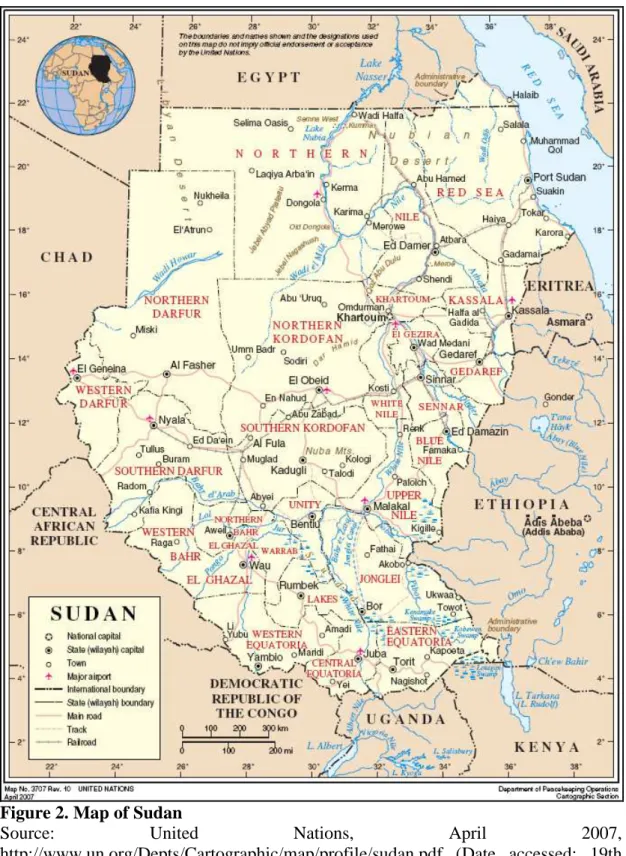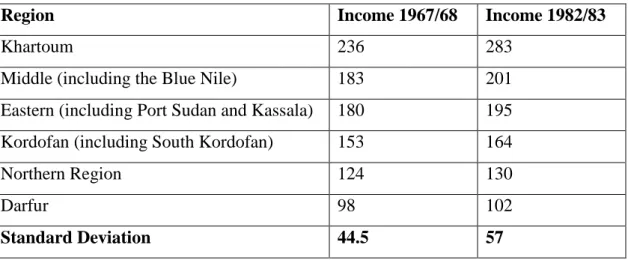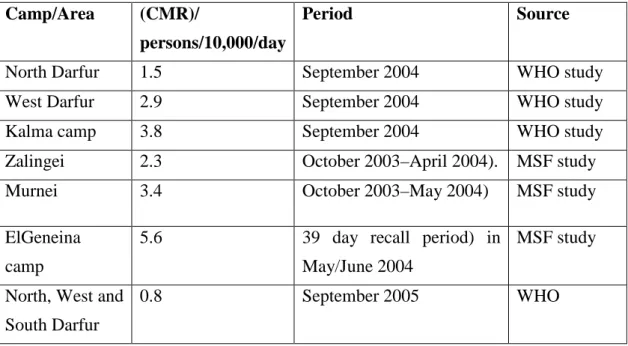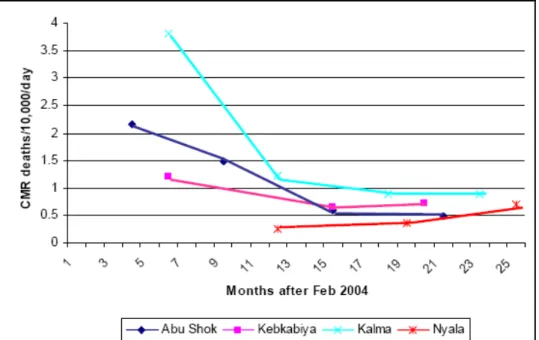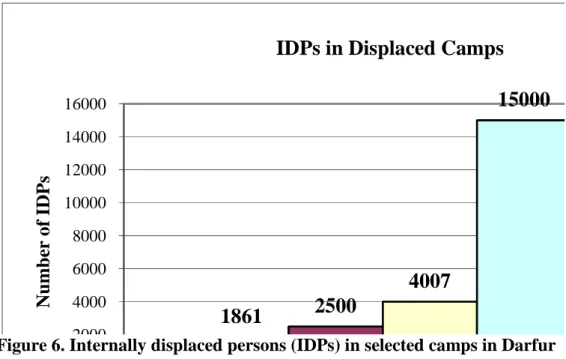The purpose of the study is to assess the extent to which the human security model provides a realistic option in light of the AU's efforts to strengthen peace and security in Africa. This study highlights the fact that the African Union's efforts to secure peace in Africa are still continually frustrated by the failure of African leaders to address fundamental threats to human security.
Africa before the OAU and the rationale for regional security in Africa
The reason for the establishment of the OAU in 1963 was because of African leaders who saw the need for member states to have common goals. It also emphasized the need to protect international cooperation taking into account the United Nations Charter and the Universal Declaration of Human Rights (Cervenka, 1997:12).
Impact of the rationale for regional security on the international community
Despite the deployment of the African Mission in Sudan (AMIS) since 2004 with the aim of finding a lasting political solution, the AU has had only a limited number of small successes due to both the lack of logistical and financial support and insufficient force size ( Appiah-Mensah, 2005:1). It is clear that there is a remarkable improvement in the strength of the AU force in Darfur.
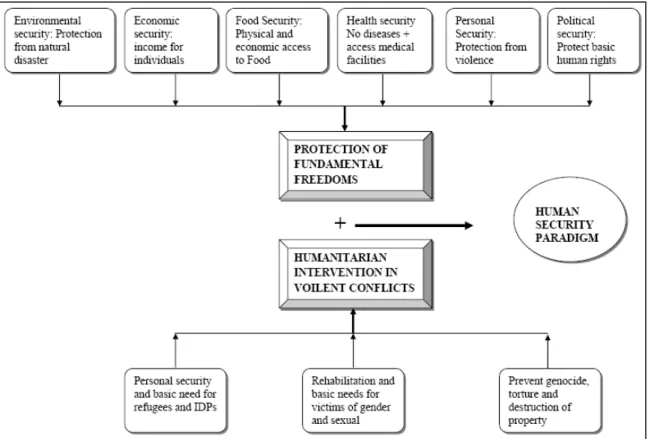
The creation and performance of OAU’s Mechanism for Conflict Prevention,
Cold War in Africa -- implications for conflict management and resolution
Legacy of militarization
He argues that while the excesses of military confrontation that characterized the Cold War era are a thing of the past, it has left behind a vast array of weapons, postures and attitudes that have fueled conflict around the world. He argues that it is from this legacy that one can understand the origins of the proliferation of weapons of mass destruction and its consequences for guerrilla warfare and domestic crimes that claim lives every day, especially in developing countries.
Deep ethnic divisions as a heritage from the Cold War
For the first time in the history of the O/AU, AMIS included a Civilian Police Department38 (CivPol) of the mission. Report of the International Commission of Inquiry on Darfur to the Secretary-General of the United Nations.
Post Cold War challenges for African security
Western disengagement from Africa
Some major powers in the Western world (France, Britain and the United States) have redefined their strategic interests in African conflicts since the end of the Cold War. This convinced Washington of the general futility of involvement in African local conflicts (Oyebade is one factor that could explain the slow response to the crises in Rwanda and Darfur).
New initiatives and greater flexibility to address African conflicts
Therefore, after the second wave of democratization on the continent, the OAU was scrapped to pave the way for the African Union in 2002. Although there were still split views among those who wanted a strong central government for the African continent, there were those who wanted something less dominant, the declaration adopted in Sirte, Libya, reached a consensus document, unanimously accepted by all the African heads of state and government present.
Objectives of the African Union
Subsequently, the AU Constitutive Act was formulated and negotiated by the OAU member states (Biswaro, 2005:112). The transformation of OAU into AU has generated debate among academics, social scientists and others.
Problem statement
Furthermore, the AU is systematically engaging civil society through the establishment of the Economic and Social Council (ECOSOC) (Biswaro, 2005:115). The severity and magnitude of the Darfur crisis,10 which is the case study of this thesis, has presented many challenges for the AU and its partners.
Hypothesis
Aim and objectives
Research methodology
Outcome Evaluation: When there is some form of implementation in accordance with the plan, attention shifts to the intended outcomes of the action plan. Protection and Empowerment of the Vulnerable: This aspect will initially focus on providing statistics from reports and surveys on the mortality rate at the beginning of the conflict until the intervention of the African Union.
Limitations of the study
In addition, slow decision-making on the part of donors has delayed most of the actions of the AU. Protecting Two Million Internally Displaced Persons: The Successes and Shortcomings of the African Union in Darfur.
The development of AU’s strategies to enforce peace and security in Africa
The establishment of the Peace and Security Council (PSC)
In its objectives, the Constitutional Act (CA) was established to promote peace and security and to promote and protect human and people's rights (Article 3, (f) and (h)). In December 2003, the AU replaced the OAU's central body for conflict management - the Mechanism for Conflict Prevention, Management and Resolution - with the Peace and Security Council (PSC).
AU’s Continental Early Warning System (CEWS)
The rationale for its creation came through a mutual concern expressed by the heads of state and government and members of the AU to develop a common defense policy that would enable Africa to avoid dependence on the international community and create a multinational African armed force that would serve as a standby peacekeeping force ready to intervene in armed conflicts (Kent and Malan, 2003:72). In the case of former President Charles Taylor, UN experts and senior Liberian officials say he embezzled nearly a hundred million dollars of his country's wealth, leaving it as one of the poorest nations on earth.
Efforts of the AU, sub-regional organizations and international actors to address
African Mission in Sudan/Darfur (AMIS)
On 8 April 2004, under the auspices of President Deby and the Chairperson of the AU Commission and in the presence of international observers and mediators, the Government of Sudan (GoS), the Sudan Liberation Movement/Army (SLM/A) and the Justice Equality Movement (JEM) signed a humanitarian ceasefire agreement conflict in Darfur and the protocol on the establishment of humanitarian assistance in Darfur (African Union, 2005). In addition to the above, the urgent question of whether the AU and its instruments such as the PSC have the capacity to monitor the implementation of the new peace agreement by all stakeholders, the problem of how to operationalize the "responsibility to protect" is crucial when it comes to assessment.
The peacekeeping role of sub-regional organizations - SADC and
For example, all efforts at the sub-regional level under SADC auspices have failed to steer Zimbabwe out of the abyss of destruction. Given that the most likely scenario for future peacekeeping operations on the continent is one of African forces operating under the mandate of either the AU or a sub-regional organization such as ECOWAS, it is imperative for African leaders to build a collective security system.
Contributions from international actors
For example, the Strengthening of African Peacekeeping Capacities (RECAMP) owes its origins in large part to France's desire to simultaneously withdraw many of its troops stationed in Africa while achieving cost savings and maintaining its influence in the region (Berman and Sams, 2002 : 20). Their emphasis is that the main problem with the "ADR initiative" in Africa is that it weakens "local self-governance and customary law".
Theoretical framework – the human security paradigm
14 Credit for the human security model goes to security intellectuals such as Barry Buzan (1991) and Mohammed Ayoob (1995). The model of human security exists at the intersection of fundamental human freedoms/rights and the ways of security that these freedoms/rights are affected by conflict situations.
Contemporary Africa and the challenge of human security
Social sources of insecurity in Africa
- Unequal distribution of resources and the quest for control over
- The HIV/AIDS pandemic
At the end of 2004, sub-Saharan Africa had just over 10 percent of the world's population, with about 60 percent of the population living with HIV (that's about 25.4 million). Consequently, good health is directly related to human dignity, the ability to exercise choice and to lose fear of the future (UNCHS, 2005:35).
Economic sources of insecurity in Africa
- Africa as unattractive international trading partner
- Mismanagement and less feasible economic policies
For example, Article 4(f) of the Protocol speaks of "non-interference in the internal affairs of another". According to authors such as Appiah-Mensah (2006), Brickhill (2007), Sharamo (2006), some of the challenges facing AUs in Darfur are a result of financial and logistical constraints, fragmented international aid and donor rigidity.
Political sources of insecurity in Africa
- The Neo Patrimonial nature of African leaders
Darfur and the fur dynasties
- Administrative system under the Darfur sultanate
According to Encyclopedia Britannica (2005), the northern people of Darfur were related to the pre-dynastic peoples of the Nile River Valley. Most nomadic tribes are landless and traditionally pass through land belonging to other ethnic groups.
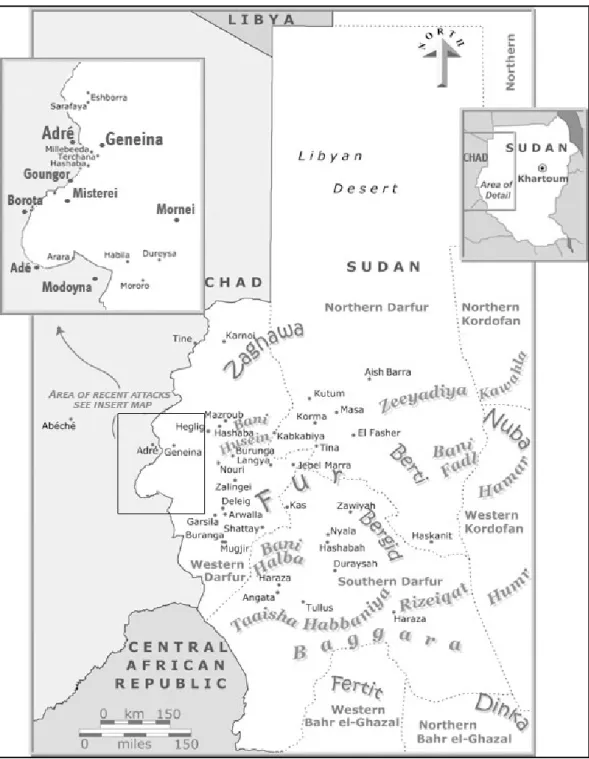
Long-term causes of Darfur conflict
- Political polarization within Darfur and the search for identification
- Land tenure and land acts of the 1970s
- Population pressure, drought and desertification
According to the 1970 law, all land is the property of the government, but some farmers, especially migrants, have refused to give it up willingly. Although the Unregistered Lands Act of 1970 was replaced by the Civil Transactions Act of 1983, courts continued to uphold the by-laws of the 1970 Act, leading to procedural confusion.
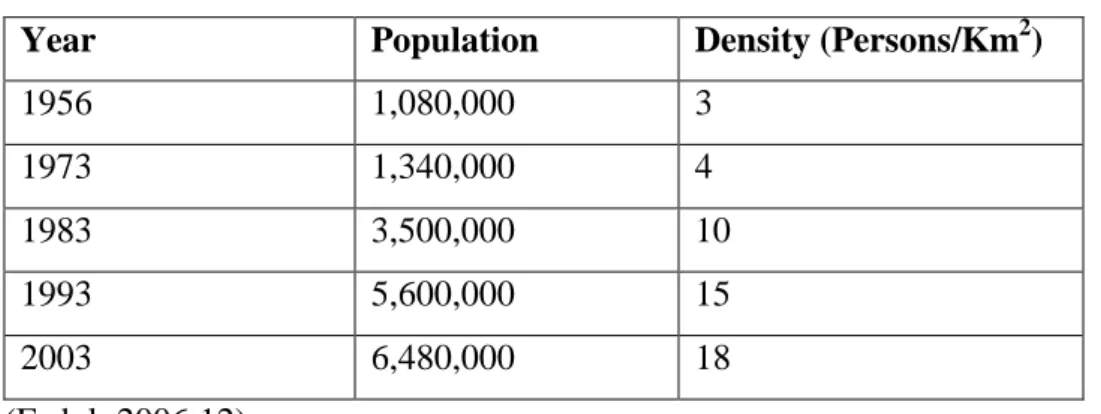
Immediate causes of the Darfur conflict
- The new government of Sudan: the political and economic marginalization
- The Implications of the North-South civil war and peace process on
- The emergence of well organized armed rebel groups
Regardless of the signing of the DPA, the conflict intensified with a major impact on regional peace. The implications of the Darfur conflict on regional peace are of concern to the AU as it has further destabilized large parts of the continent.
The projected mortality rate between 2004 and 2007
According to Muthee, large-scale studies conducted between 2004 and 2007 in Greater Darfur by the WHO provide insight into mortality rates in camp situations in Darfur. For example, according to the WHO mortality study of 2004 that "despite the intensity of humanitarian interventions in Darfur by most of the leading humanitarian aid organizations, death rates among displaced people in North Darfur, West Darfur and in some camps in South Darfur ( eg Kalma camp) remained high and above emergency thresholds” (see Table 4), indicating that some of the communities continued to live an emergency phase (Muthee, 2007:15).

Human rights abuses between 2005 and 2008
In order to convict a man of the same offense, a confession or the testimony of four witnesses is required. In addition to the issue of continued torture and victimization of the people of Darfur, reports from humanitarian organizations and international media also confirm that the situation in Darfur has affected humanitarian workers and AU peacekeeping forces.
The level of Refugees and Internally Displaced Persons 2004-2007
The attack came the day after a helicopter carrying the AU deputy commander was shot at while en route from Zalengi in West Darfur to the AU mission headquarters in El-Fasher, the capital of North Darfur (Bloomfield, 2007). By mid-January 2005, displaced persons were also present in some areas in West Darfur (Figure 6).
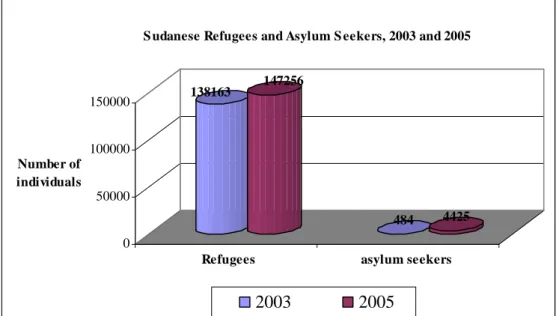
The World Food Programme (WFP) and the Darfur Crisis, 2004-2007
Therefore, the success of the AU can only be achieved if there is a willingness of all organizations (such as RECs, donors and civil society capable of providing early warning of impending crises) to come together to have a common agenda for the peace and security of the African continent. Bot, J.D.E, (2006) "The AU and the Darfur Crisis: A Challenge to Regional Peace", American Chronicle.
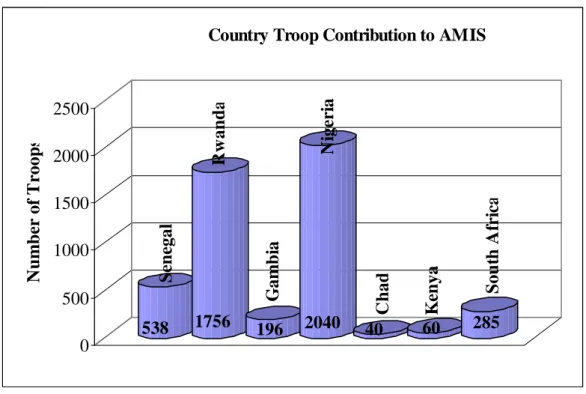
The legal basis for African Union’s intervention in the Darfur Conflict and the
From AMIS to UNAMID; the strength and aptitude of the AU/UN force in
Given the scale of the Darfur conflict, especially the human security issues, the AU will need five times its force (that's around 35,000 troops) to secure the affected population in Darfur. In 2006, AMIS had a total of 7,000 troops in Sudan to address the Darfur crisis, but this figure increased with the establishment of the African Union/UN hybrid force in 2007, which has more than 20,000 personnel.
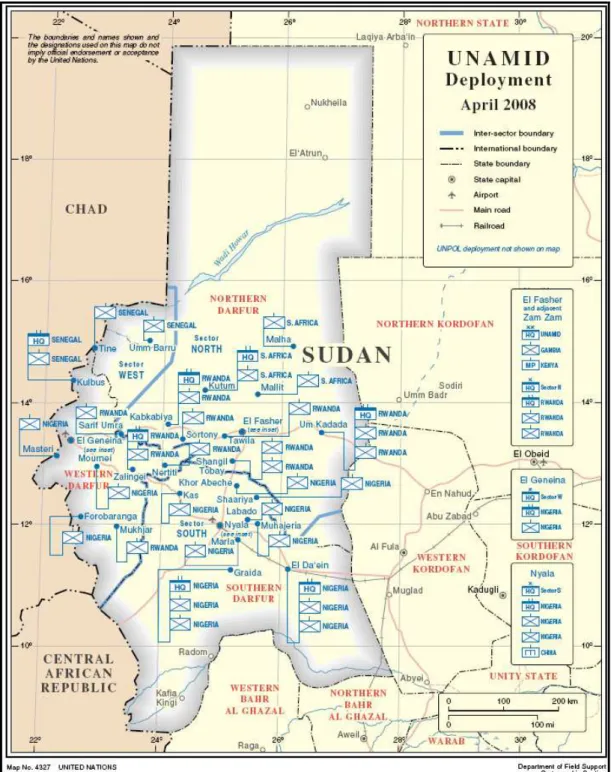
Achievements of the AU as AMIS and UNAMID
Rodolphe Adada, the UN/AU Joint Special Representative for Darfur, argues that "logistical challenges remain one of the biggest problems, with the Mission currently lacking the infrastructure to house the thousands of personnel expected in full deployment". In order to determine the ways in which the AU will be able to promote peace and human security in Africa, it is vital to present some of the challenges that the AU faced in their mission in Darfur (UNAMID, 2008A).
Challenges faced by the AU as AMIS and UNAMID
According to USA Amnesty International (2008B), logistical challenges remain the main problems as the mission lacks the infrastructure to house the thousands of staff expected upon full deployment of UNAMID. The subsequent chapter seeks to discuss the prospects for the AU to ensure peace and security by putting the human security model into practice.
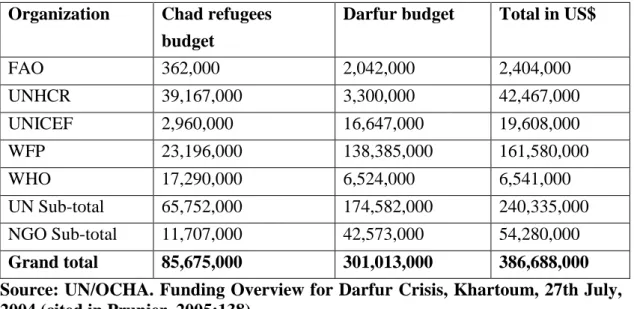
The responsibility of the AU to protect
The AU's future to ensure peace and security on the African continent has been strengthened by what it has learned from past experiences. In April 2003, the AU deployed its first peacekeeping mission called the African Mission in Burundi (AMIB) to support the peace process in Burundi.
Lessons learnt from the AU experience in African conflicts: Burundi, Chad, and
- Consistent commitment to peace and (human) security in Africa
- The African Union Peace Mission in Burundi (AMIB)
- The African Union Peace Mission in Sudan (AMIS)
- Ownership vs dependency on external actors
AMIB was engaged in violent conflict prevention and peace building during a very complex phase of the conflict. This is clearly evident from the AU mission in Sudan, where the lion's share of the costs was borne by the EU, the US and other donors (Klingebiel, 2005:36).
The way forward: Is AU the answer to peace and human security issues in
The success of ensuring human security does not belong to the AU to build on already existing strategies, rather it is better to continue with the development of tools for operational "conflict prevention"39 which includes Continental Early Warning Systems (CEWS). Thus, it is essential that the AU establish such alert institutions to ensure that African governments recognize the needs/interests of all minority groups, a key human security issue to ensure good governance and representation of minority group interests in government .
The vital role of non-state actors
That is why it is important to deal with corruption and recover some of the corrupt money stashed away abroad for productive investment. The concept is the result of a global commission (the Brundtland Commission), which was created to examine the state of the world's environment and the relationship between environment, development and the corporate realm.
Accountability and good leadership qualities among member states
AU is also based, among other things, on the principle of "respect for democratic principles, human rights, the rule of law and good governance" (Solomon and Swart, 2004:13). There is very little to suggest that the AU is willing to hold member states accountable for human rights abuses.
Strengthening African response capacity - an African Standby Force by
Towards a continental early warning system for Africa'. 2002) 'The Right Intervention: Enforcement challenges for the African Union', African security review, Volume 11, No. 3, pp 3. Opportunities and challenges for living up to the responsibility to protect: the emerging peace and security regime of the African Union', The North-South Institute, Ottawa, Canada, Monograph No. 119, 2005.
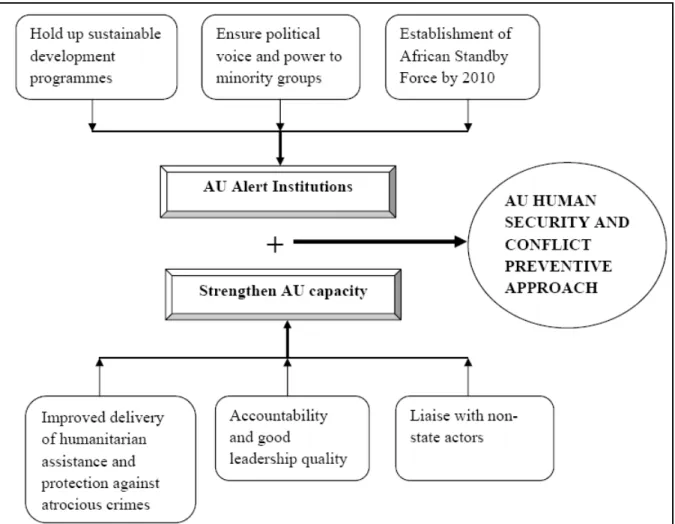
Improved delivery of humanitarian assistance and protection against atrocious
Therefore, he suggests that “the most effective way for Africans to deal with these problems is to participate in the reconstruction of the state through the making of a good constitution and to provide themselves with appropriate laws and institutions.” SudaNews, (June 2005) 'Dafur conflict: its history, nature and development', available at: http://www.history_of_darfur_conflict_pdf (accessed 27 February 2008).
